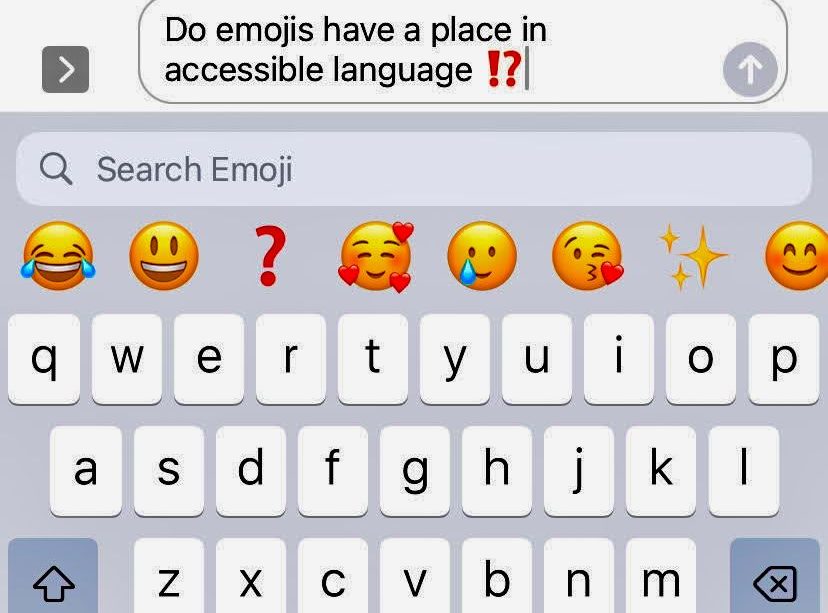Emojis and accessible language

Expressions mean more than meets the eye
This past summer I was surprised to hear that a Canadian farmer has been court ordered to pay a substantial amount in damages after a court ruling that a thumbs up emoji was sufficient to accept contractual terms. Justice Timonthy Keene, the presiding judge, argued that emojis have become a common facet of our modern communication and therefore will necessitate legal systems to confront emojis in the future.
As someone who has been using the email signature “I use emojis as part of accessible language” for the past several years, learning of this case provided an entry point to explore more widely what constitutes accessible language in ‘digital speak.’
Plain language, also referred to as plain writing, is a form of communication that is straightforward and uses only as many words as necessary to communicate a message. It avoids obscurity, overly academic or complicated jargon, convoluted sentence structure, and is a part of accessible language. However, plain language is not a simplified version of the English language and possesses the ability to communicate complex and complicated themes.
Writing in accessible language ensures that our communication includes everyone. This is built on the intention to be intelligible across literacy levels, ages, and abilities, including people who are neurodivergent. Neurodiversity refers to the unique ways peoples’ brains and cognition work. Rather than being seen as deficit, neurodiversity holds that there is no right way to think, process information, communicate, behave, or learn.
An emoticon like “ >;-) “ is a shorthand form of a facial expression, and a precursor to emojis. Emojis have been further developed with modern communication technologies to develop graphics such as the following: 😊, ☹. Emojis on smartphones, chat platforms and email applications have become highly popularized and perhaps a daily practice.
For some, emojis might represent our disjuncture with literacy and perhaps the assumption that they make us poorer communicators in the process. However, this deeply misunderstands the way communication works.
A study published by the American Psychological Association indicates that emojis, like facial expressions, help to provide non-verbal cues and work to translate emotive elements, tone, and reduce ambiguity in our digital speak. Some useful context comes from applied linguist Dr. Philip Seargeant and author of the book The Emoji Revolution which attempts to answer how technology is shaping the future of communication. According to his research the emergence of emoticons, the most basic representations of facial expressions, can enhance digital communication. Similarly, emojis help to add nuance and compensate for the lack of nonverbal modalities available in digital communication.
Research and the lived experience of neurodivergent people tells us that there are significantly different communications styles from those coded as ‘neurotypical.’ These include difficultly in ‘picking up’ emotive and tonal elements of communication. In digital speak these emotive and tonal elements are further alienated because of the digitized medium. So perhaps emojis offer us a critical intervention in making digital speak more accessible.
In a 2022 webinar titled Don’t Disable Me: how you can avoid creating barriers for disabled people, Rina Wharton, a consultant at AbilityNet who identified herself as autistic and dyslexic, shared how she sometimes struggles with facial expressions and body language. Wharton further explained that, “While writing, I know I can be very direct, because of my autism. I tend to use emojis to indicate I’m joking. Or this is a funny thing.” According to AbilityNet, a UK company concerned with digital accessibility, emojis have become a useful modality of communication within neurodiverse communities.
Since the emergence of emojis, which originated in Japan and directly translated as ‘picture,’ there has been an uptake of research around the usage of emojis in digital communications styles. Overlooked within these studies has been how neurodivergent people receive, interpret, and use emojis as part of accessible language.
According to the American linguist Johanna Nichols, the gold standard criterion in communication is mutual intelligibility. Because emojis present such potential in making our digital communications more understood (especially in regard to tone and emotion), we should broaden our understanding and include them in conversations of accessible language.









